Vienna is known for its museums, see below if any of them strikes your fancy.

Not an overstatement: museums are the main attraction for a curious visitor to Vienna. Thanks to the city's Habsburg past and thriving modernism of 1900, world-class painting and design collections abound. You can also find excellent smaller exhibitions, such as those at the House of Austrian History, the Jewish Museum, and the Architecture Center. Details below.

#1 - Kunsthistorisches Museum (location; 10 a.m. to 6 p.m. every day during high season, otherwise closed on Monday; €21 admission): Consisting of former Habsburg treasures, the Kunsthistorisches is home to one of the great old masters collections in Europe. The location itself is memorable: emperor Franz Joseph had the German starchitect, Gottfried Semper (1803-1879), move to Vienna for the commission, which also included the building for the Museum of Natural History, symmetrically opposite from the Kunsthistorisches.
The Kunsthistorisches is known for its paintings by Albrecht Dürer, Lucas Cranach the Elder, Pieter Bruegel the Elder, Titian, Tintoretto, Paolo Veronese, Caravaggio, Peter Paul Rubens, Anthony van Dyck, Diego Velázquez, and many others (here, my favorites). A museum inside the museum is the Kunstkammer – Cabinet of Curiosities – with wonderful statuettes, gobelins, clocks, board games and other objects the Habsburgs deemed exotic. The marble busts throughout will make you appreciate the famously protruding "Habsburg Jaw." On Thursdays, the museum is open until 9 p.m.

#2 - Wien Museum (location; 10 a.m. to 6 p.m., closed on Monday; free entry): That grim corporate-looking building on Karlsplatz? A great treasure. It's the Vienna City Museum, presenting the history of Austria’s capital on three levels. Even if you're new to the city, the spectacular collection is worth a glance.
Artifacts from the Saint Stephen's Cathedral; the Counter-Reformation and its impact on the city; Ottoman military drawings in preparation of their 1683 siege of Vienna; the Metternich-era and its Biedermeier art; the glory days of Austria-Hungary exemplified by the Ringstraße culture and Hans Makart's portraits; the taming of the Danube; the years of Red Vienna; the Nazi period and the Holocaust; the post-war boom; and the urban renewal of the city center. A lot to think about. Free entry!
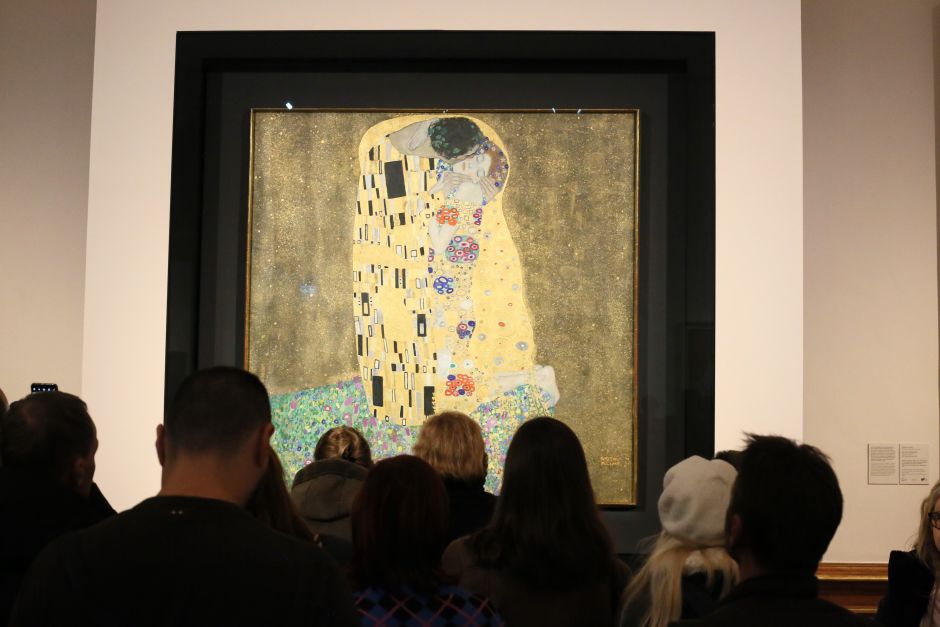
#3 - Belvedere Austrian Gallery (location; 10 a.m. to 6 p.m. every day; €19 admission to the Upper Belvedere, €24 combined ticket; advance ticket purchase): Prince Eugene of Savoy (1663-1736) wasn’t just a great military general who routed the Ottoman army, but he also knew how to enjoy the finer things in life as evidenced by his enormous Baroque summer estate, known as the Belvedere, located within walking distance of Vienna’s city center. The Prince’s former dominion currently consists of three museums. The main one, the Upper Belvedere, surveys Austrian paintings from the Middle Ages to the present day.
Many visitors head straight to Gustav Klimt's famous kiss, but you can enjoy less crowded halls with the soulful Baroque paintings of Paul Troger and Franz Anton Maulbertsch, not to mention Solimena's knee-buckling altar canvas in the Prince's private chapel. The Biedermeier was a German specialty – neoclassical art tamed to middle class tastes. Look out for Ferdinand Georg Waldmüller, Peter Fendi, and Josef Danhauser. And for the wrenching self-portraits of Richard Gerstl, a pioneering expressionist. If you've tired of art, relax in the Baroque garden-park or the neighboring botanical garden.
The more modestly sized Lower Belvedere houses temporary shows, while Belvedere 21, a steel-and-glass mid-century box a short walk away, contains contemporary exhibitions.

#4 - Leopold Museum (location; 10 a.m. to 6 p.m., closed on Tuesday; €15 admission): In the 1950s, the Austrian art historian Rudolf Leopold (1925-2010) bought a bunch of Egon Schiele paintings on the cheap which serve today as the core of the Leopold Museum, a massive white modern box inside Vienna's Museums Quarter. Schiele’s emaciated self-portraits share the halls with a best-of selection of Austrian early modern art from around 1900. From Hans Makart’s felicitous canvases through the haunting portraits of Oskar Kokoschka and Richard Gerstl to the sheer force of Albin Egger-Lienz and the New Objectivity movement of the 1930s. Peppered throughout are highly decorative paintings of Gustav Klimt.
There's a fascinating hall showing side-by-side interiors designed by Otto Wagner, Adolf Loos, Josef Hoffmann, and Koloman Moser. I could never warm up to the Viennese arts and crafts workshop, the Wiener Werkstätte (1903-1932), but its later period defined by Dagobert Peche is surely more fun than Josef Hoffmann's angular pieces. The Leopold's temporary shows, always ambitious, are on the below-ground levels.
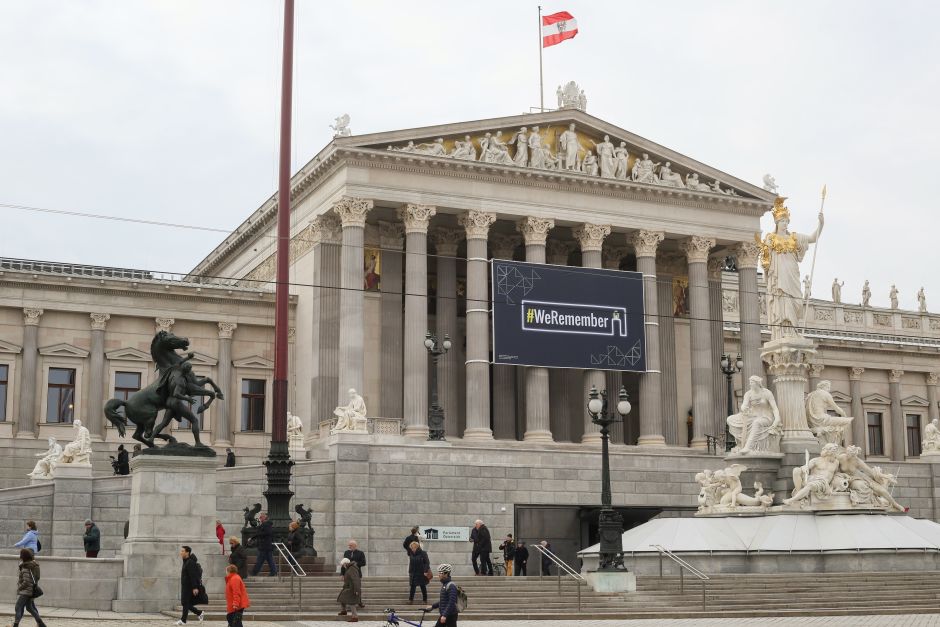
#5 - Austrian Parliament Building (location; guided tours Monday through Saturday; free admission upon advance registration): Stretched along the Ringstraße and proudly facing the Imperial Palace across from it, Austria's parliament building (1874-83) embodied the success of liberal politics and its constitutional checks on Habsburg Emperor Franz Joseph. The statues outside the building – Pallas Athena, classical historians, horse tamers – convey the primacy of knowledge and wisdom over passion in politics (by the time the building was finished, this liberal period ended).
Today, the Austrian Parliament offers free guided tours to the public both in German and English. All you need to do is register as far in advance as possible. The tour, which takes about an hour, features the Greek temple-like Hall of Pillars and both chambers of the Parliament, including the recently renovated and completely high-tech national council.
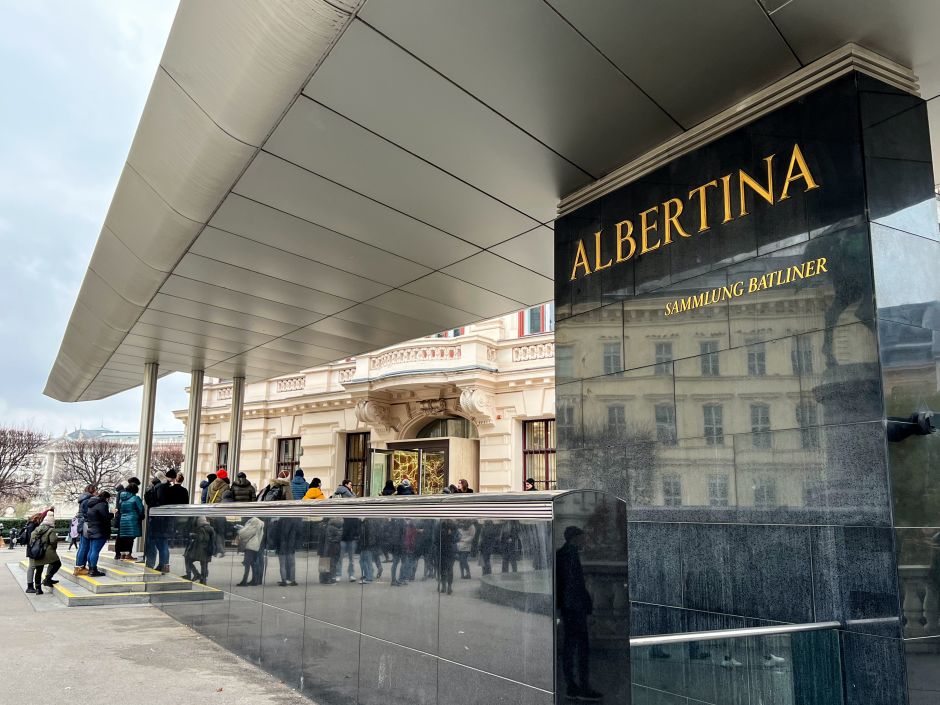
#6 - Albertina (location; 10 a.m. to 6 p.m. every day; €19 admission): When the art lover Duke Albert of Saxen-Teschen (1738-1822) married into the Habsburg family, he used his newfound fortune to buy drawings and prints by the likes of Leonardo, Dürer, Michelangelo, and Rubens. A small sample of Duke Albert’s enviable collection is displayed inside his old residence, which forms the Albertina Museum today. When Duke Albert's adopted son, Archduke Charles (1771-1847) moved into the palatial home, he redesigned the halls in a Neoclassical style (Charles was the military general who defeated Napoleon at Aspern-Essling in 1809 and whose bronze equestrian statue still anchors Heldenplatz; many, including Napoleon, thought Charles would’ve been a better Habsburg emperor than his brother, Franz).
These days, the Albertina is best known for its permanent show, “Monet to Picasso,” which takes visitors through Pointillism, Fauvism, Der Blaue Reiter, Die Brücke, Expressionism, New Objectivity, and Surrealism. There are holes and gaps; still, it's Central Europe's leading depository for early-modern international art, with fine works by Wassily Kandinsky, Edvard Munch, Ernst Ludwig Kirchner, Emil Nolde, Lyonel Feininger, Marc Chagall, Joan Miró, and Pablo Picasso. The museum also prides itself on its high-profile temporary shows.

#7 - Schönbrunn Palace & Imperial Carriage Museum (location; 9 a.m. to 5 p.m. every day; €20-40 admission; advance ticket purchase): Built mainly during the reign of Empress Maria Theresa (1717-1780), this giant Habsburg summer palace on the Vienna outskirts with 1,441 rooms was meant to symbolize royal power. Compared with the empress' Rococo style halls, such as the “Chinese Cabinets,” the quarter of Emperor Franz Joseph (1830-1916), a self-described workaholic, seems relatively subdued. The vast garden, which is free to enter, features a “Roman ruin” and the Gloriette pavilion, typical design pieces of the Neoclassical period that recall the passage of time and the glory of ancient Rome.
A side building of the palace houses the Imperial Carriage Museum. The surprisingly amazing collection showcases the transportation vehicles of the rich and the wealthy: The coach used during the coronation of the Holy Roman emperor; the carriage of the Viennese archbishop; the hunting sleigh of Crown Prince Rudolf; the imperial hearse; the slick passenger automobile of the last reigning Habsburg, Charles I.
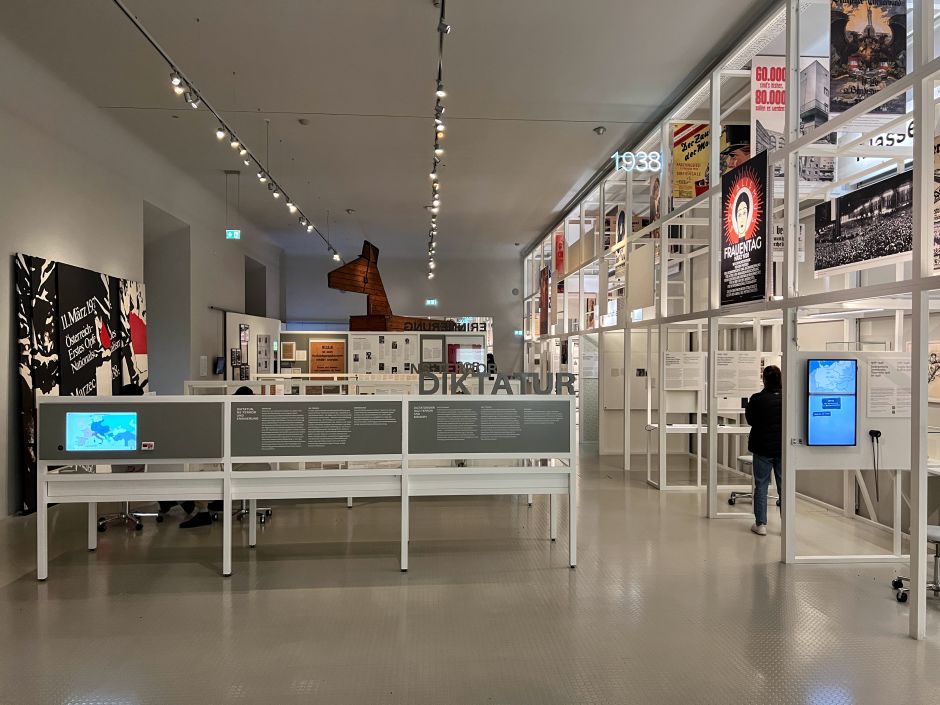
#8 - House of Austrian History (location; 10 a.m. to 6 p.m., closed on Monday; €9 admission): For a tourist, Vienna can still feel like a Habsburg city – every building, every exhibition, every story somehow ties back to a strange-looking emperor. But it turns out the royal family is long gone and that Austria has been through much in the past century.
The House of Austrian History provides an informed summary about the country’s post-Habsburg epoch: The first republic, the annexation by Nazi Germany (the Anschluss) and Austria's complicity in the Holocaust, the "economic miracle" of the 1960s, the search for a national identity. The exhibition requires some reading, but this is an essential museum to make sense of present-day Austria.

#9 - Museum of Natural History (location; 9 a.m. to 6 p.m., closed on Tuesday; €18 admission): If the zoo (below) is too much of a trek from downtown, an excellent substitute, similarly child-friendly, is the Museum of Natural History. Inside that great building on Maria-Theresian-Platz, facing its identical twin, the Kunsthistorisches Museum.
Empress Maria Theresa’s husband, Francis Stephen (1708-1765), is largely to thank for the core of the collection, whose range and dimension of minerals and animal species are both terrific and terrifying. I’m thinking of that spider crab – weight: 20 kilos; leg span: four meters – and the skeleton of fin whale that takes up much of a very big hall. It’s easily the most spectacular museum in Vienna (Andrew Carnegie’s gift to Franz Joseph, a plaster cast of a dinosaur frame, is also here). Glance outside the window occasionally for panoramic Ringstraße views.

#10 - Imperial Furniture Collection - Möbelmuseum (location; 10 a.m. to 5 p.m., closed on Monday; €13 admission): Once the royal furniture storage and maintenance depot, this museum rightfully claims to hold the largest collection of exhibited furniture in the world. Four expansive floors are densely packed with luxurious lamps, clocks, spittoons, chairs, sofas, prayer benches, baby cribs, desks, marriage beds, wheelchairs, and even portable toilets collected from the Habsburg family's various palaces, from Laxenburg to Schönbrunn, from Gödöllő to Bad Ischl, from the Hofburg to Trieste.
All are works of unique craftsmanship, but very different from one another – compare Empress Maria Theresa’s Rococo with the decor-free Biedermeier (~Empire) favored by her grandson, Emperor Francis. Fans of this elegant Biedermeier style can savor the many period rooms dedicated to it. Preserve some energy for the top level, which holds the famous bentwood chairs of Thonet and modern pieces from the 20th century by the likes of Otto Wagner, Josef Hoffmann, and Adolf Loos. Visitors can also compare samples of varnished wood, survey the tools of a cabinetmaker, and try the royal furnishings.

#11 - MAK – Museum of Applied Arts (location; 10 a.m. to 6 p.m., closed on Tuesday; €16.50 admission): Austrian design has a lot to show for itself thanks to people such as Joseph Ulrich Danhauser (1780–1829) and Michael Thonet (1796-1871) who revolutionized mass-produced furniture and bentwood chairs. At the Museum of Applied Arts, located in its Ringstraße-based neo-Renaissance home since 1871, there’s an entire hall lined with Thonet chairs made between 1830 and 1930, including the famous No. 14. You can also rest your eyes on wonderful Empire and Biedermeier-style objects – both springing from the same source.
Also here: Art Nouveau furniture and household products anywhere from Scotland to Hungary, with a focus on its local workshop, the Wiener Werkstätte, founded in 1903 by Josef Hoffmann, Koloman Moser, and their patron, Fritz Waerndorfer. The most famous commission of the Wiener Werkstätte was the complete design and furnishing of the Stoclet Palace in Brussels, of which elements are on display, including Gustav Klimt’s fresco paintings. Note that there are huge and often very good temporary shows at the MAK.

#12 - Schönbrunn Zoo (location; 9 a.m. to 5:30 p.m. every day; €27 for adults, €15.50 for children): It’s hard to think of a more child friendly program in Vienna than a visit to the Schönbrunn Zoo, the oldest in Europe (1752). Abutting the Habsburg summer palace, the zoo’s origins go back to empress Maria Theresa’s nature and animal loving husband Francis Stephen – himself Holy Roman emperor. The sweep of cute animals is completely enthralling, from perennially napping koalas and giant pandas to hyper monkeys. Bonus: Informative wall texts, comfortable cafes, spacious playgrounds.
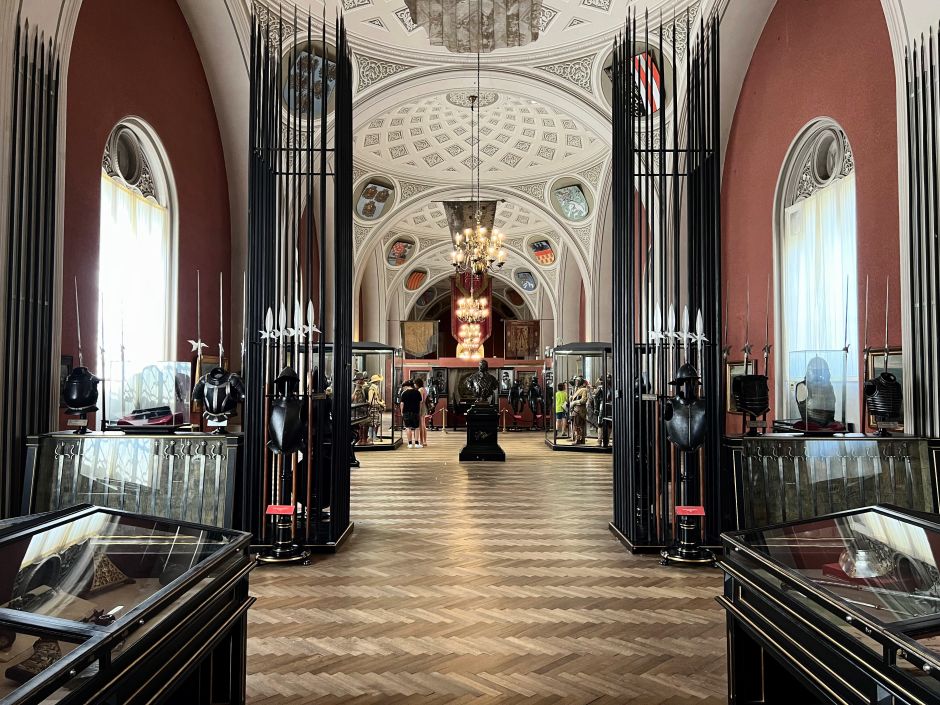
#13 - Museum of Military History (location; 9 a.m. to 5 p.m. every day; €7 admission): Military outfits, medals, ribbons, cannons, revolvers, swords, maps, paintings of war scenes, paintings of field marshals and Habsburg emperors. If this kind of stuff gets you going, I suggest you add the Museum of Military History to your Vienna list. Most striking to me was to see the car in which Archduke Franz Ferdinand (1863-1914) was shot in Sarajevo, triggering World War I (history within arm's reach!). The crowd, unsurprisingly: men of all ages.

#14 - St. Stephen’s Cathedral & Dom Museum (location; 7 a.m. to 10 p.m. every day; free admission to parts of the church, €25 combined ticket): Absurdly large and cloaked in semi-darkness, the Saint Stephen’s, Vienna’s most famous church, is intimidating and mysterious in the way only medieval cathedrals can be. Stained glass windows, winged triptychs, thick red marble tombs, soaring piers, and a wonderful pulpit and baptismal font comprise the Gothic repertoire of the interior, which is overlaid with Baroque side altars.
Parts of it are accessible for free, but the combined ticket provides entry also to the neighboring Dom Museum – with a memorable portrait of Habsburg Rudolf IV who shouldered the construction costs – and to the towers and the crypt, the latter piled with human skeletal remains and royal intestines.

#15 - Karlskirche (location; 9 a.m. to 6 p.m. Monday to Saturday, 11-7 on Sunday; €9.50 admission): One of the great Baroque churches outside of Italy, the Karlskirche embodies the Habsburg Counter-Reformation and reflects the 16 years that its architect, Johann Bernhard Fischer von Erlach, spent absorbing the Rome of Bernini, Borromini, and Cortona.
Those two Trajanesque columns flanking the portico evoke the symbol of Spain – Pillars of Hercules – recently lost by the Habsburgs and still grieving it. Both the wonderful fresco of the central dome and the high altar's sculpture group show the Counter-Reformationist archbishop, Carlo Borromeo rising to heaven (recognizable by his projecting nose, Borromeo was the patron saint of Emperor Charles VI, who commissioned the church). The side altars contain an Assumption of the Virgin painting by the Venetian superstar, Sebastiano Ricci. NB: the admission ticket includes access to the panoramic terrace up top.

#16 - Liechtenstein Palace-Museums (location; guided visits with advance registration; €29 admission): Enjoying unparalleled privileges, the aristocracy of the Habsburg Monarchy had it very good at the turn of the 18th century. Many of them paraded their new-found wealth by erecting amazing Baroque palaces in Vienna with princely art collections to match. Under Johann Adam Andreas, the Liechtenstein family commissioned two such buildings: one in the city center (Stadtpalais) and one just outside it (Gartenpalais), both of which offer guided tours upon advance booking.
The Gartenpalais is teeming with Baroque masterpieces: Filippo Parodi sculptures, Rubens and Van Dyke paintings, Andrea Pozzo and Johann Michael Rottmayr frescoes, Bernardo Bellotto cityscapes. The Stadtpalais contains more Neoclassical and Biedermeier art – Canova, Amerling, Waldmüller, Danhauser, Winterhalter – and an interior loaded with 19th-century neo-Rococo furnishings.

#17 - Mumok (location; 10 a.m. to 6 p.m., closed on Monday; €15 admission): The Mumok is Vienna’s main outlet for contemporary art, from 1950 to the current day. The museum is located inside a windowless monolithic building clad in dark-gray basalt stone (looks much better than it sounds). Instead of a permanent exhibition, they rotate the immense collection of photography, film, painting, sculpture, and installations through temporary shows. On any visit, you might find Picasso, Giacometti, and Brancusi sculptures alongside young international artists. Leopold Museum (see above), is next door in case you’d like to combine the two. Note that the Mumok is closed for renovation until June, 2024.

#18 - Sisi Museum (location; 9:30 a.m. to 5 p.m. every day; €17 admission): Despite its name, only a part of this sizable museum inside the Imperial Palace (Hofburg) is dedicated to fans of Duchess Elisabeth of Bavaria (1837-1898), better known as Sisi, the lonely, absent, and peripatetic wife of Habsburg Emperor Franz Joseph. The exhibition features many of her personal items – letters, dresses, cosmetic bags, even her swanky rail carriage and Demel orders – but it makes no attempt to provide a more layered view of the unhappy Empress than what’s on the surface level.
The rest of the museum leads through the lavish neo-Rococo imperial apartments, including Sisi's fitness corner, where the royal couple spent the winter months (similar to their summer palace in Schönbrunn). The Silver Collection on the ground floor presents Habsburg dishware – silver, gold, glass, porcelain – and, my favorite, copper cooking equipment of all shapes and sizes.

#19 - Austrian National Library – Prunksaal (location; 10 a.m. to 6 p.m., closed on Monday; €10 admission): The Habsburg Court Library on Josefsplatz is one of the great Baroque treasures of Vienna. In 1716, Emperor Charles VI (1685-1740) tasked his favorite architect, Johann Bernhard Fischer von Erlach, to design a building worthy of the vast royal book collection. As in a contemporary Italian palazzo, Roman-era artifacts decorate the staircase which leads to the astonishing library lined with marble, gold, and hardwood.
Court painter Daniel Gran (1694-1757) frescoed the illusionistic dome showing, predictably, the countless good deeds and apotheosis of the Emperor, whose dignified marble statue stands underneath (the touchscreen in the main hall can help to make sense of it all). Today, the library holds 200,000 books as well as 18th-century wooden globes inspired by astrology.

#20 - The Imperial Treasury (location; 9 a.m. to 5:30 p.m., closed on Tuesday; €14 admission): Through crowns, scepters, ceremonial robes, and informative wall texts, this museum within the Imperial Palace provides a short history lesson about the constantly shifting Habsburg imperium: What was the Holy Roman Empire? How about the Duchy of Burgundy? The Order of the Golden Fleece?
Highlights include the pearl-studded crown of the Holy Roman emperors; the Habsburg family's own crown, commissioned by Rudolf II in the 16th century; an emerald vessel so high in value that Genoese jewelers declined to appraise it; the silver cradle the city of Paris gifted the son of Napoleon Bonaparte and his wife, Habsburg Archduchess Marie Louise. There are also famous religious relics, such as the Veil of Veronica, a piece from the Holy Cross, and the nail with which Jesus’s right-hand was affixed to the cross. The provenance of these items, naturally, is questionable, but their religious and sometimes artistic value is enduring.

#21 - Jewish Museum of Vienna (location; 10 a.m. to 6 p.m., closed on Saturday; €15 admission): This downtown museum details Vienna’s Jewish history from the Middle Ages to the current day – the rollercoaster existence of Jews in Habsburg Vienna, both their periodic expulsions and the golden era under Franz Joseph when more than 170,000 Jews lived here by 1910 (only Warsaw and Budapest had more).
The admission ticket provides access also to the Judenplatz Museum, about a ten minute walk from here, which focuses on Vienna’s medieval Jewish past and the excavated remains of its synagogue. On Judenplatz, there’s a memorial to the 65,000 Austrian Jews killed in the Holocaust.

#22 - Beethoven Museum (location; 10 a.m. to 5 p.m., closed on Monday; €8 admission): The German-born Ludwig van Beethoven (1770-1827) spent most of his adult life in Vienna and today several monuments and museums honor the great composer. The most informative of these is the Beethoven Museum in Heiligenstadt, a Vienna suburb, where the maestro often spent his summers and whose bucolic magic inspired his famous Pastoral Symphony (No. 6). The exhaustive exhibition sheds light on Beethoven’s move from Bonn to Vienna, his love of nature and long walks, his work routine and increasingly debilitating deafness, his relations with patrons and women, his legacy, and many other topics.
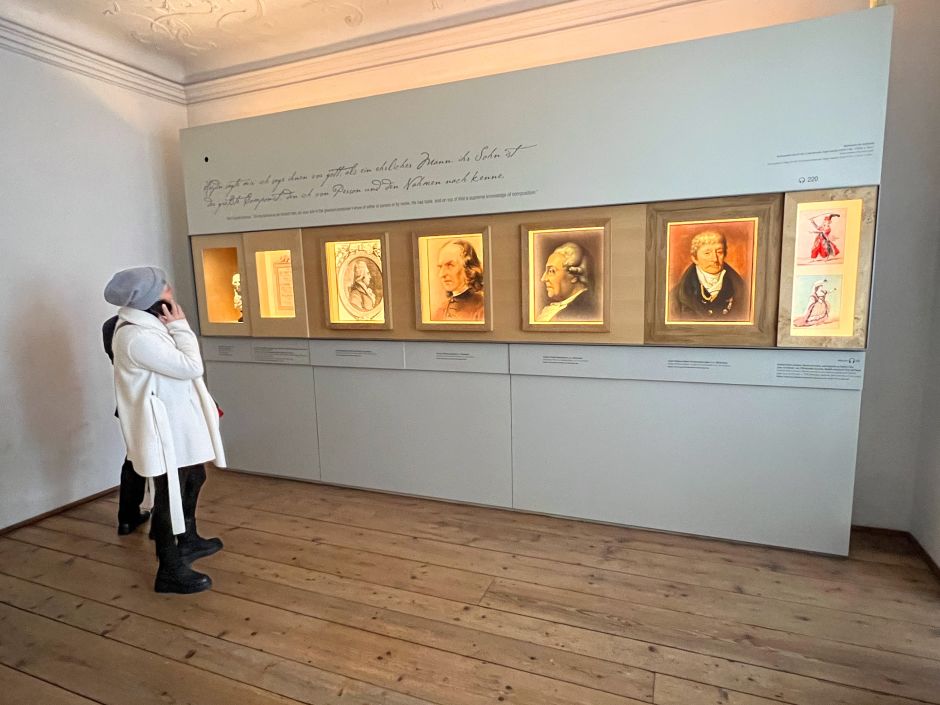
#23 - Mozart House (location; 10 a.m. to 6 p.m.; €14 admission): The museum is located inside the downtown building near St. Stephen’s Cathedral where Wolfgang Amadeus Mozart (1756-1791) lived for three years and where he composed The Marriage of Figaro to mixed reviews. The exhibition is low on Mozart-related memorabilia but it makes up for it with an informative audio guide (wall texts are spare).
Visitors can learn about Mozart's life in Vienna, where he spent the last decade of his life: his penchant for high-living and gambling, his inability to hold on to money, his intellectual influences and optimism about the Enlightenment of Joseph II, his freemasonry, the premiere of Don Giovanni, and the murky details of his death.

#24 - Joseph Haydn House (location; 10 a.m. to 5 p.m., Friday to Sunday; €5 admission): A small and charming museum inside the two-story building where the widowed Joseph Haydn (1732-1809) spent the last twelve years of his life. In Gumpendorf, back then a leafy suburb away from Vienna's downtown, Haydn felt finally free and independent (for three decades, he had been laboring as the Court Conductor of Prince Esterházy). The collection includes draft music scores of The Creation and The Seasons, Haydn's will, and a bit of Viennese urban history.

#25 - House of Music (location; 10 a.m. to 10 p.m. every day; €17 admission): This downtown museum contains three somewhat disjointed elements, all of them richly illustrated but rather surface level. The first one covers Vienna’s most famous orchestra, the Wiener Philharmoniker, and includes a small auditorium where visitors can listen to pieces performed during their famous New Year’s concert. The second section presents the nature of sound and the categories of musical instruments. The third section features rooms about Haydn, Mozart, Beethoven, Schubert, Strauss I, Mahler, and Schönberg, some with more substantive contents than others.
The interactive elements, such as the “virtual conductor room” and the “waltz generator” machine, are playful, but the curation can feel haphazard at times. Vienna’s individual museums on the city's famous composers – while less glitzy – are more thoughtful and comprehensive (see above).
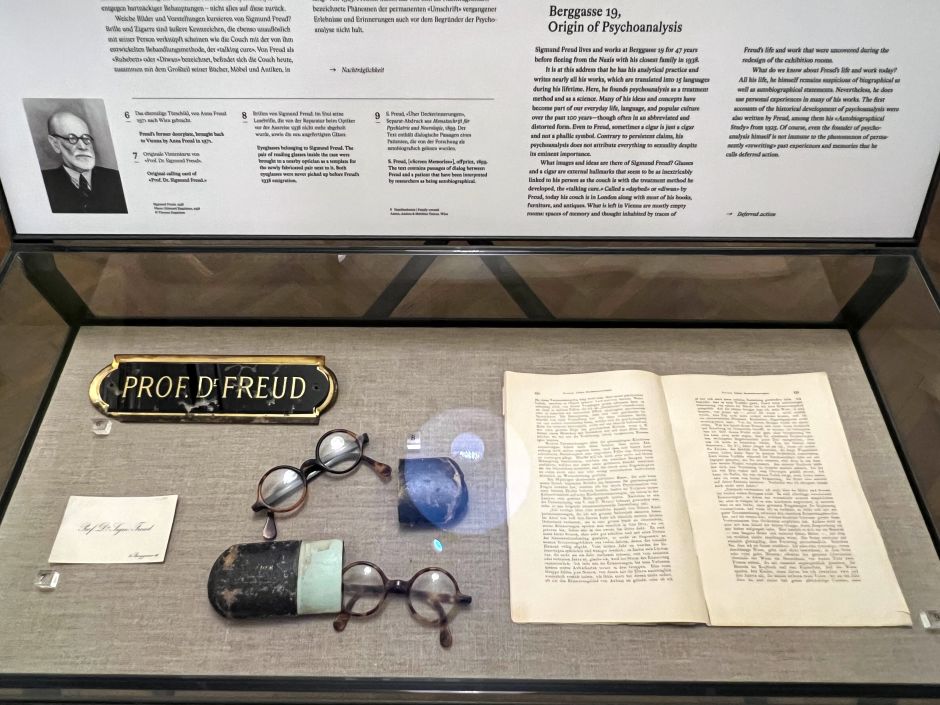
#26 - Sigmund Freud Museum (location; 10 a.m. to 6 p.m., closed on Tuesday; €15 admission): The exhibition takes place inside the two apartments on Berggasse where Sigmund Freud lived and practiced for nearly four decades (1891-1938), before fleeing Nazi Austria. Unfortunately, little of Freud’s furniture and belongings have been retained and instead visitors are met with a collection of wall texts about the life and work of the father of psychoanalysis. The museum feels a bit dated; a more focused biography and a contemporary evaluation of his theories would be welcome additions.
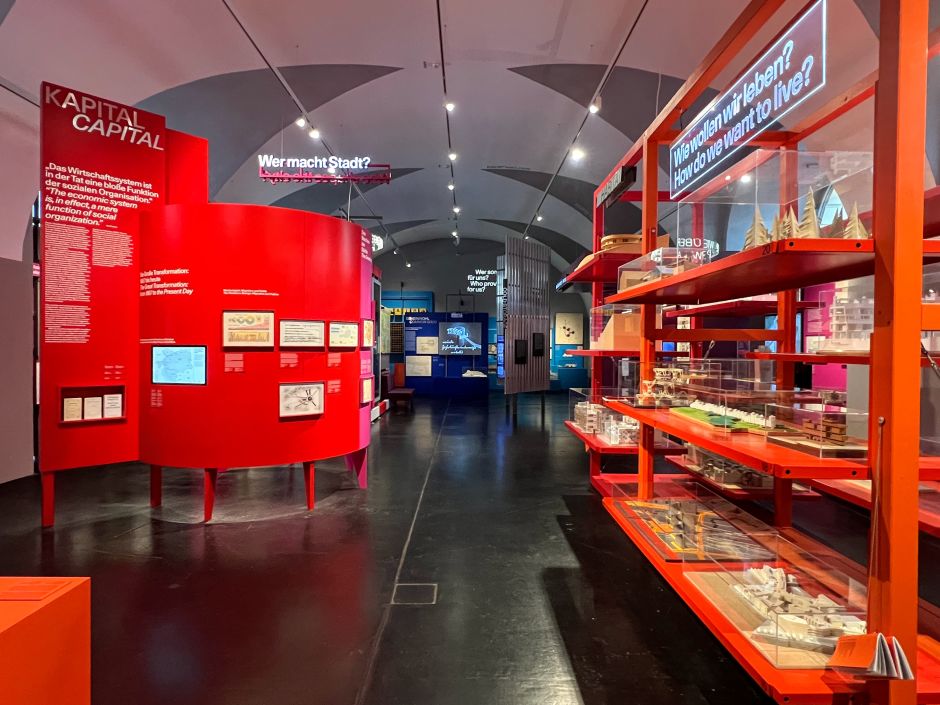
#27 - Architecture Center (location; 10 a.m. to 7 p.m. every day; €9 admission): Fans of architecture shouldn't miss the excellent permanent exhibition titled “Hot Questions – Cold Storage” at the Architecture Center, inside Vienna's Museums Quarter. Grafted onto themes such as population growth, public housing, building types, and sustainability, the collection explores the history of 20th and 21st century architecture in Austria, including the dark side of Adolf Loos, the Red Vienna period, and the story behind the opening of the United Nations headquarters. Lots of interesting facts, not all of them architectural, are sprinkled throughout. The temporary shows are located across the courtyard. (Here, a rundown of my favorite buildings in Vienna.)
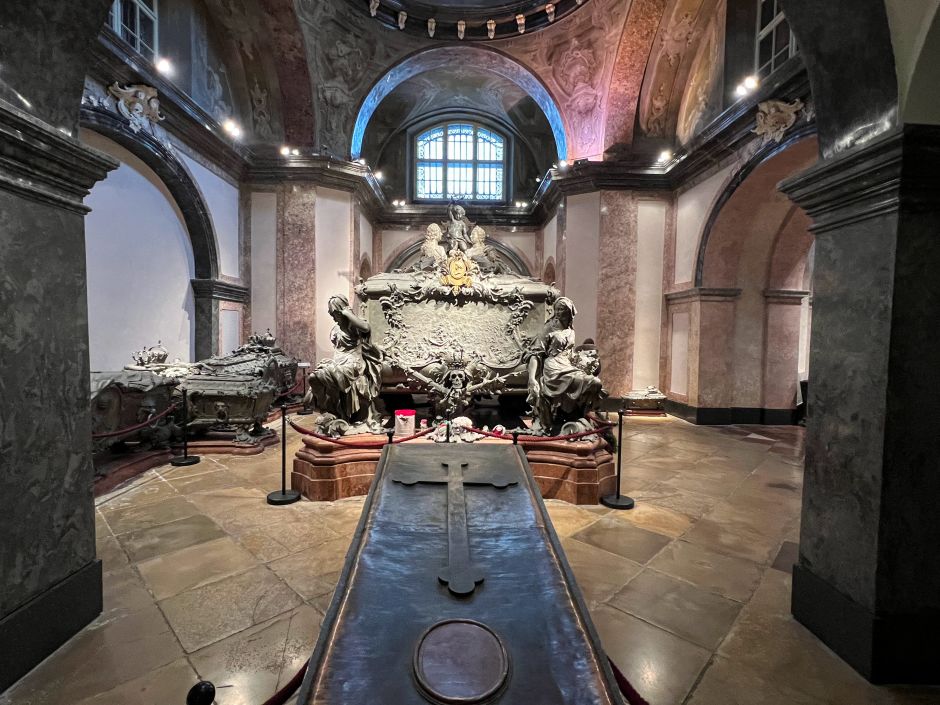
#28 - Imperial Crypt (location; 10 a.m. to 6 p.m. every day; €8.50 admission): Habsburg-fans shouldn't miss the burial chamber where lie the remains of 150 members of the royal family, including those of twelve emperors. The crypt is located below the Capuchin (Franciscan) Church in the city center and opens with the vaults of Emperor Matthias and his wife, Anna of Tyrol, who founded the place in 1618.
It’s fascinating to observe the evolution of tomb styles. The late-Baroque funerary monument of Empress Maria Theresa and her husband, Francis I, rivals the grand papal tombs in the Saint Peter's Basilica. Conversely, the enlightened emperors, Joseph II and Leopold II, rest in sober, Neoclassical style. One of the most recent persons buried here was Otto von Habsburg, in 2011, the son of the last reigning Habsburg Emperor, Charles I.

#29 - Heidi Horten Collection (location; 11 a.m. to 7 p.m., closed on Tuesday; €15 admission): Heidi Horten (1941-2022) was a widowed Austrian billionaire who accumulated an enviable array of 20th-century art and haute couture gowns. Her collection is exhibited in a downtown Vienna palazzo and includes a motley mix of paintings by the likes of Pablo Picasso, Henry Matisse, Ernst Ludwig Kirchner, Chaïm Soutine, Luciano Fontana, René Magritte, Marc Chagall, Andy Warhol, Jean-Michel Basquiat, Francis Bacon, Georg Baselitz and many others.
Evidently, Horten’s passion was fashion and the most enjoyable part of the rotating show is the playful sketches she received from leading Paris fashion houses (Dior, Givenchy, Patou, Yves Saint Lauren) with fabric samples and brief descriptions on cuts and color.
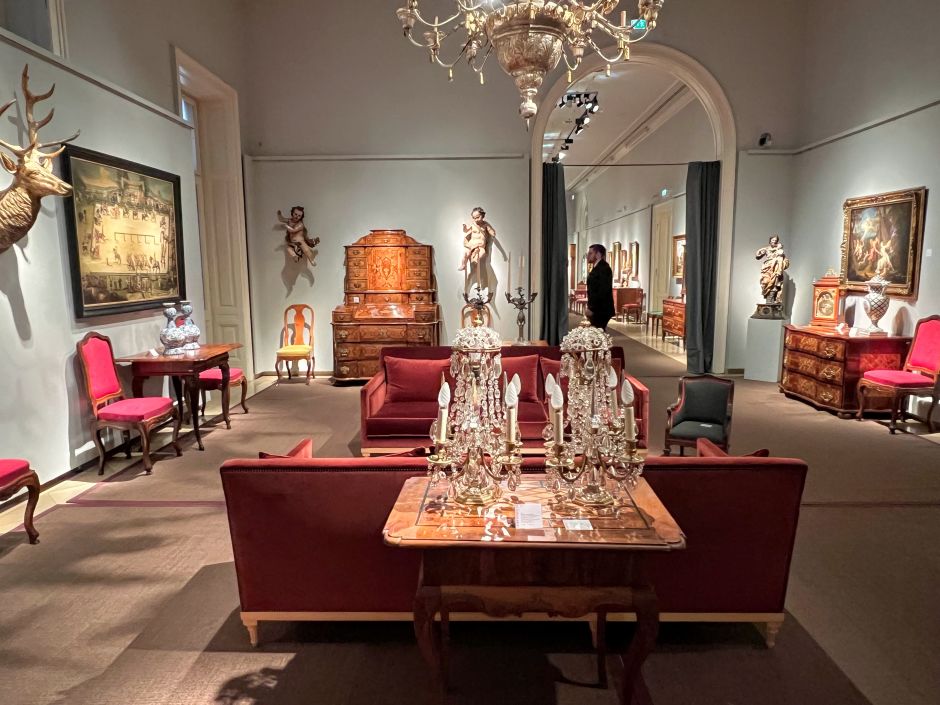
#30 - Dorotheum (location; 10 a.m. to 6 p.m., closed on Sunday; free admission): The Dorotheum isn’t a museum but the oldest auction house in the world, opened in 1707. Strolling its hallowed halls, which are open to the public, is an experience in itself even if most of us couldn't afford to buy anything here (still, we can follow the auctions online). Being an auction house means the exhibitions change regularly, but you'll encounter furniture, paintings, dishware, watches, and jewelry from different epochs across three floors. There's a cafe on the top.
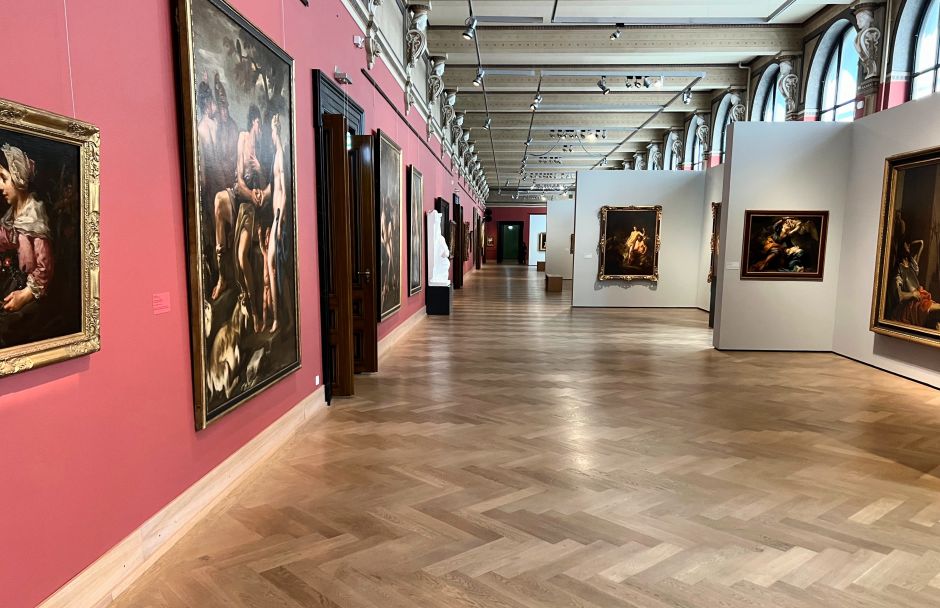
#31 - Picture Gallery of the Academy of Fine Arts (location; 10 a.m. to 6 p.m., closed on Monday; €9 admission): One of Vienna's best-kept secrets is the old masters collection located on the top floor of Vienna's Art Academy and originally used as a teaching tool for students. Dutch Golden Age is the highlight – featuring Rembrandt, Pieter de Hooch, Jacob van Ruisdael – but those into Peter Paul Rubens, Anthony van Dyck (a self-portrait made as a 15-year-old), Hieronymus Bosch, and Botticelli will also find treasures amid the mostly B-level paintings.
The icing on the cake is experiencing Theophil Hansen's stunning historicist building (1871-1877) inside and out. Hansen was the most prolific architect of Vienna's Ringstraße, having also designed the Austrian Parliament.
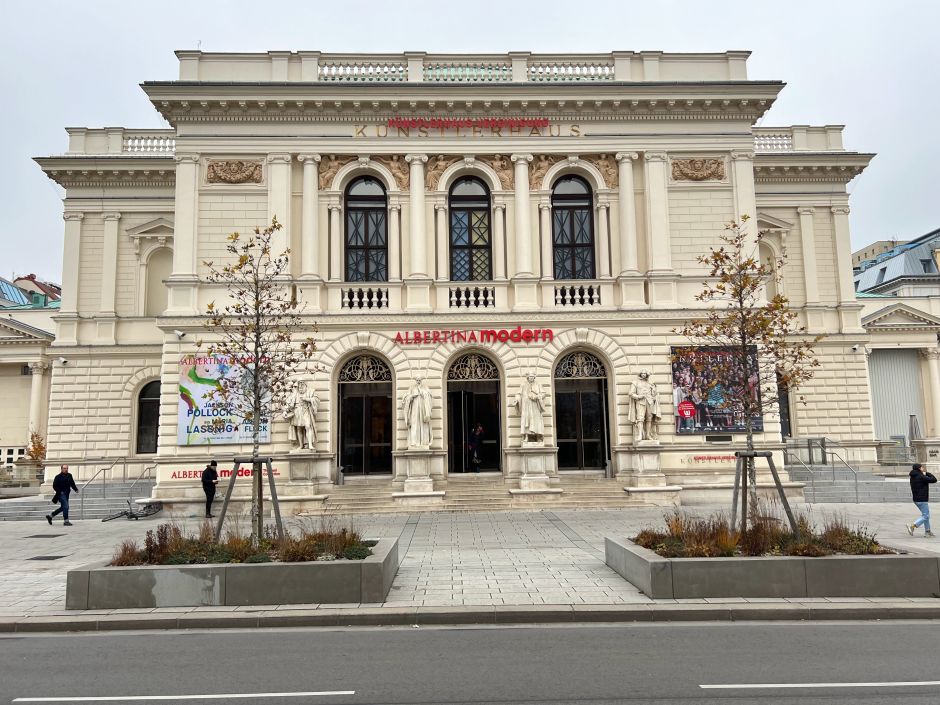
#32 - Albertina Modern (location; 10 a.m. to 6 p.m. every day; €15 admission): Opened in 2020, one of Vienna’s newest museums is dedicated to Austrian post-war art, the period from 1945 to the present day. The mission of Albertina Modern, a satellite of the Albertina (see above), is to throw light on local artists within the context of their international peers.
A recent show on Abstract Expressionism, for example, presented Jackson Pollock and his fellow Americans beside Austrian paintings from the same time. Instead of a permanent exhibition, they constantly rotate their collections. The museum shares the building with the Austrian Artists’ Society known as the K�ünstlerhaus (the same Künstlerhaus that Gustav Klimt & Co. left in 1897 to form the Vienna Secession).
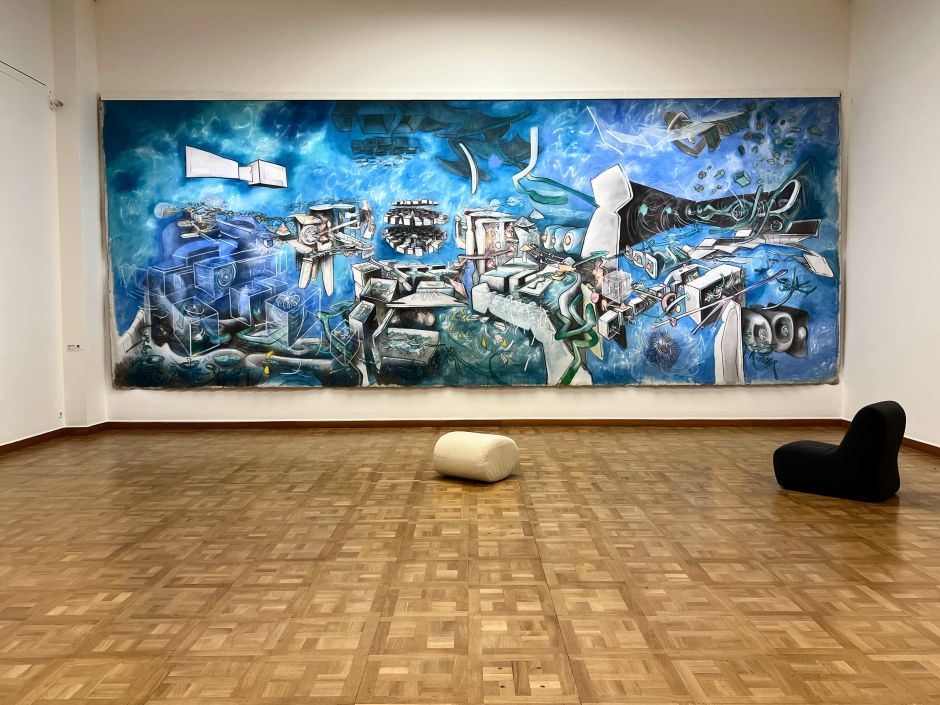
#33 - Kunstforum Wien (location; 10 a.m. to 7 p.m. every day; €14 admission): Located in the former cash registers of a Neoclassical bank building, the Bank Austria Kunstforum is one of the main venues in Austria for 20th century international art, mainly painting. Since its 1988 opening, the exhibition venue has become known for its high-profile and highly attended temporary shows, such as those on Gerhard Richter, David Hockney, and Helmut Newton in recent years. The tresor room in the basement focuses on younger artists and installations.
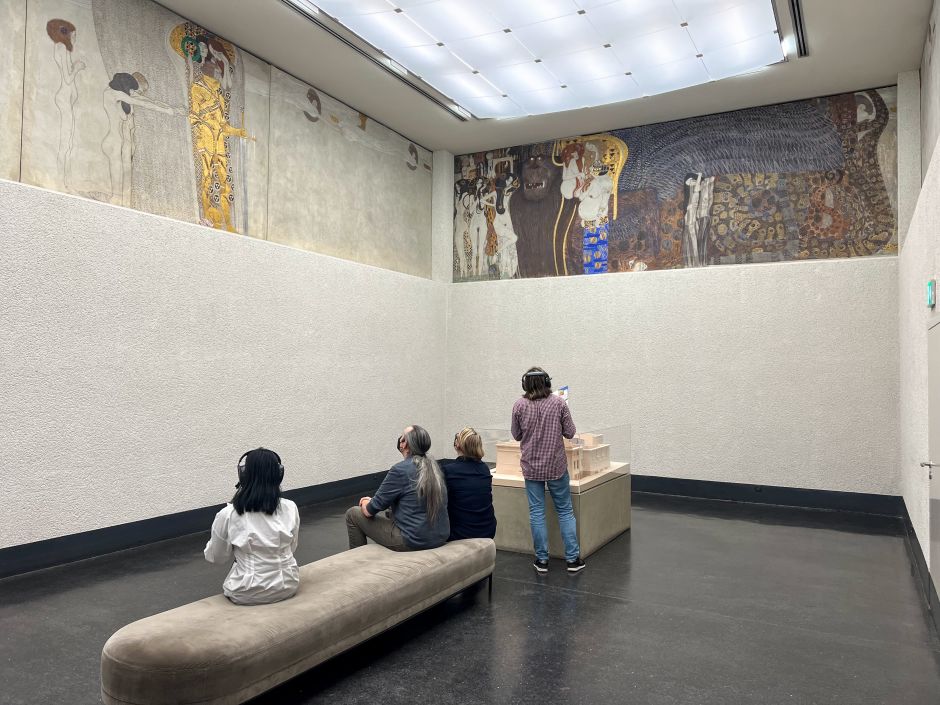
#34 - Secession Building (location; 10 a.m. to 6 p.m., closed on Monday; €12 admission): When a group of artists headed by Gustav Klimt broke from the Viennese painters’ association, they built this strange-looking white building with a golden dome to house their own exhibitions. Joseph Maria Olbrich’s 1898 “temple of art” has since become a symbol of the city.
In 1902, the Secessionists staged a show to honor the legacy of Beethoven, for which Klimt painted a frieze about humanity’s yearning for happiness, an interpretation of Symphony No. 9 and still on display in the below-ground level. The ground floor houses contemporary artworks inspired by the Secessionist founding principle, inscribed on the building’s facade and coined by the Hungarian art critic, Ludwig Hevesi: “To every age its art. To art its freedom.”
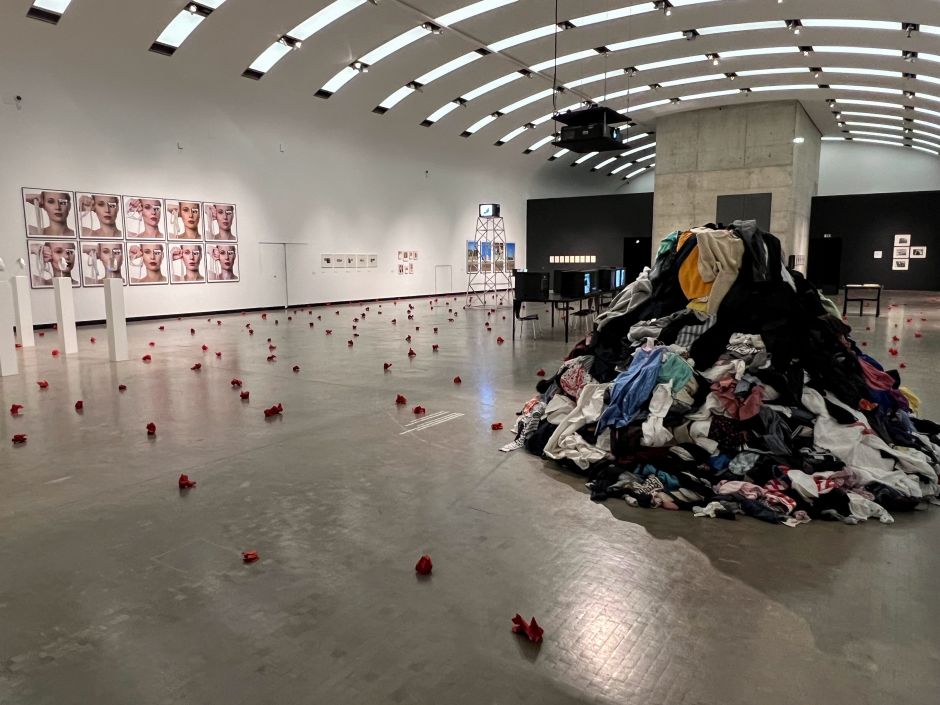
#35 - Kunsthalle Vienna (location; 11 a.m. to 7 p.m., closed on Monday; €8 admission): Located in Vienna’s Museums Quarter, the Kunsthalle specializes in contemporary, mainly international artworks that focus on social issues of the present day. A recent show by the Croatian artist Sanja Iveković, for example, dealt with the objectification of women in the media. Note that the Kunsthalle is an exhibition space without its own collection and that there's another, smaller venue on Karlsplatz in District 4.

#36 - Arnold Schönberg Center (location; 10 a.m. to 5 p.m., closed on the weekend; €6 admission): Arnold Schönberg (1874-1951), who grew up in a lower-middle class Jewish family in Vienna's Leopoldstadt, was a seminal innovator of modern music in the 1920s. His music cut ties with the past, composing atonal works and later moving to the twelve-tone scale. The Arnold Schönberg Center in Vienna’s District 3 introduces visitors to the life and work of the composer through photos, correspondences, scores, and his own paintings (he learned to paint from the expressionist prodigy, Richard Gerstl; the friendship ended tragically). Schönberg’s reconstructed Los Angeles study is also on display.

#37 - Pathological-Anatomical Collection in the Narrenturm (location; 10 a.m. to 3 p.m. Wednesday to Saturday; €8 admission): An unusual and disturbing museum, the pathological-anatomical collection is dedicated to human diseases. On display are preserved samples of tumors, aggressive skin diseases, inflammations, unusual deformities and so on. It's not for the faint of heart.
The museum is located inside a white rotunda decorated with plain rustication, originally erected as a mental asylum as part of Emperor Joseph II's (1741-1790) Vienna Hospital system. Some locals refer to the building as the "Guglhupf" in reference to the Viennese cake of similar shape.